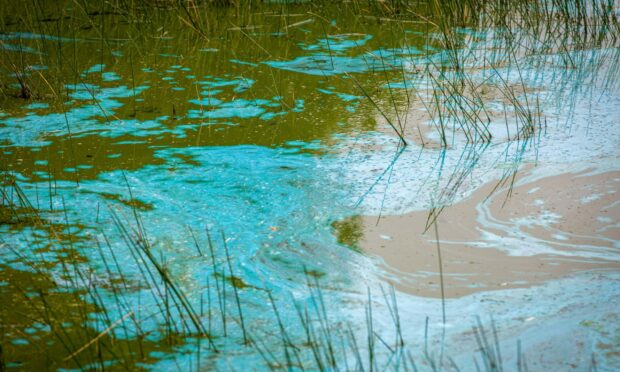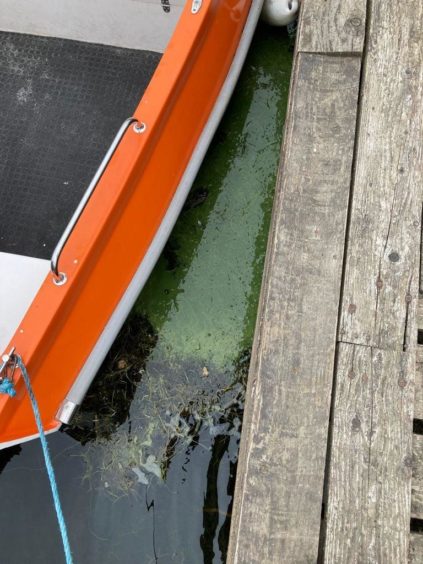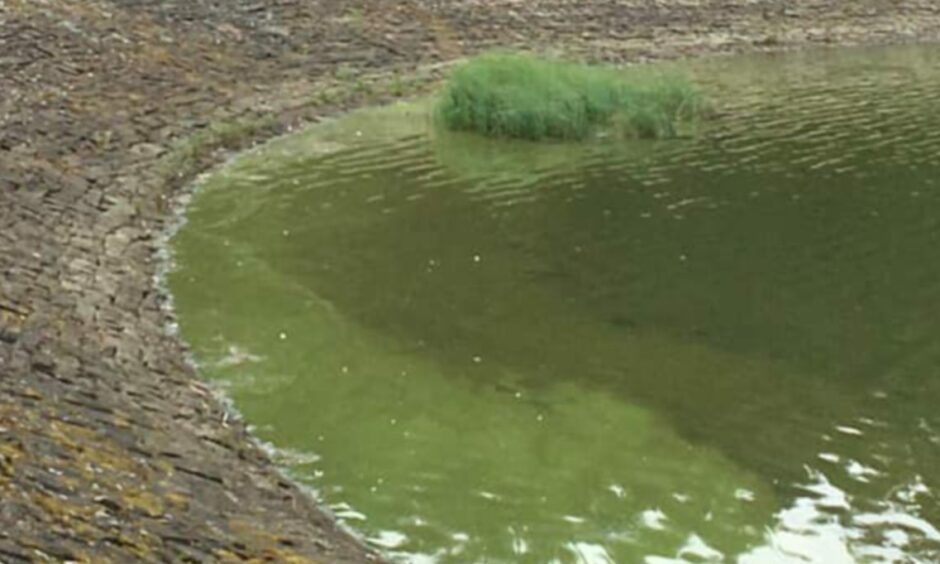Perth and Kinross Council has further warned people about the dangers of blue-green algae after an outbreak in Loch Tay.
The local authority tweeted saying there is an outbreak in the Kenmore and Acharn areas.
@ScottishEPA have alerted us to blue green algae (BGA) at Loch Tay in areas including Kenmore and Acharn.
If you’re planning to use the loch, be aware of the health risks from BGA. (thread…more follows)
— Perth & Kinross Council (@PerthandKinross) September 11, 2021
The warning said that SEPA alerted the council of the outbreak and for people to be aware of the health risks from the algae.
It comes after organisers of a swimming event planned for Loch Tay were forced to cancel because of an outbreak of toxic algae.
The blue-green algae – cyanobacteria – has been found on the loch – resulting in the cancellation of the Swim Loch Tay event planned for September 18.
Swimmers and others who have encountered the blooms have often developed skin rashes.
Blue-green algae has been particularly prevalent this year with blooms of the toxic bacteria being found in several parts of Tayside and Fife.
The algae can be highly dangerous for humans and pets, especially dogs.
Blue-green algae is a naturally occurring bacteria that can grow in ponds, lakes and reservoirs.
Whilst we know it as blue-green algae, it’s not actually an algae but a bacteria known as cyanobacteria.
It thrives especially in still or slow-moving water, and whilst it can occur at any time of the year it’s most dangerous during warmer weather when the concentrations are higher.
While no deaths or long-term illness amongst humans have been identified, exposure can cause severe illness.
Other effects listed by the NHS include eye irritation, vomiting, diarrhoea and pains in
muscles and joints. People can also have seizures.
A SEPA spokeswoman said: “Blooms of blue-green algae can develop during the warmer months and can be quite common at this time of year.
‘Harmful algal blooms’
“SEPA confirmed blue-green algae was present at this location and members of the public should follow advice provided by the local authority.
“Cases of blue-green algae can be reported via SEPA’s 24 hour Pollution Hotline.
“Reports can also be made via the UK Centre for Ecology & Hydrology ‘Bloomin Algae’ App.
“This provides a rapid and comprehensive picture of harmful algal blooms in your area and can help provide early warning to the public.”


